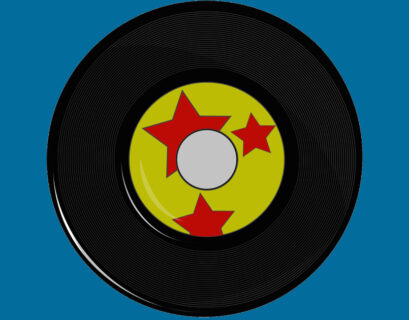It’s the time of year for saving money!

In part one of this review series on The Story Of The Grateful Dead, an exclusive from Vinyl Me Please, I looked at the late ‘60s and early ‘70s classic live albums Live / Dead and Europe ’72. If you missed that review, please click here. In Part Two I looked at the 80s live albums Reckoning and Without a Net. If you missed that review, please click here.In this segment of the review series we’ll look at some classic studio releases from the band, beginning around 1970 or thereabouts.
Recapping the intent of this collection, it is designed as an introductory overview for the vinyl-loving aspirant Dead Head.

All of the studio albums (and most of the live ones) in the set are newly mastered in all analog “AAA” form by Chris Bellman at Bernie Grundman Mastering. That is mostly a great thing and overall everything sounds real good. Excellent even. In general I’m very pleased with the quality of this set from the sound quality on through to the fine details of its packaging and perhaps most importantly, how the set was curated. If you are an established DeadHead, chances are you don’t really need this collection. However, if you are looking for nice quality vinyl pressings that are mostly pretty close to the originals in sound and in many ways better in packaging, The Story Of The Grateful Dead may be the collection for you.
All the albums were manufactured at Quality Record Pressing and come in audiophile grade plastic sleeves. The only design nit is that the Warner Brothers Records-era labels labels feature the new Warner Music logo which looks nothing like any of the original logos from the period these albums were made. Other solutions to the challenges of matching logos from competing labels without infringing on trademarks are very interesting indeed.

American Beauty
Arguably the finest album by The Grateful Dead, it is hard to go wrong with most versions of this record. It is a near perfect song cycle, with many incredible songs that have gone on to classic rock staples including the hit “Truckin’,” “Sugar Magnolia” and the acoustic gem, “Friend of the Devil.” American Beauty was the point where the world took started to pay attention and realized The Grateful Dead were not only great performers, but outstanding singers and songwriters.
I have owned original editions, late 70s and 00s pressings, even a much revered Mobile Fidelity edition of American Beauty. I even own (and enjoy!) the 5.1 surround sound remix on DVD Audio Disc! This record falls into that “favorite album” category, for sure…
For this portion of the review I compared the new Vinyl Me Please edition to an early ‘70s original pressing and a 2011 era Rhino Records 180-gram reissue.

When you start listening to the different versions side by side, you’ll notice subtle differences for a multitude of possible reasons. Tape speed, mastering techniques, anomalies on the master recording, pressing quality, and many other variables all come into play. Some versions even seem to have bothersome quirks beyond the scope of this review (I’ll explore that topic in another article in the future).
But “in general,” American Beauty is a great sounding album rich in its balance of acoustic and electric guitars and lush harmony. It has long been a favorite for high fidelity stereo demos.
All in all the new Vinyl Me Please edition sits neatly against the my original, perhaps sounding a bit crisper. I like how the cymbals sound on this new version, with a nice sense of studio space and decay. The acoustic guitars on “Operator” sound rich and sweet. I think I may even like it a bit more than the 2011 version pressed at RTI!
Workingman’s Dead

Working backwards, this album was a big breakthrough for the Dead, its first acoustic-centric, post-psychedelic album which aligned perfectly with the back-to-the-roots, going-up-the-country post Woodstock vibe of the time. Workingman’s Dead set the stage for the landmark American Beauty. Both albums are two sides of the same coin and they sound fantastic
Again, as with American Beauty, as you explore different versions of the album side by side, you’ll start to notice subtle differences in how the album was produced.

Starting with my original early 70s’s pressing I got re-familiarized with the album as I hadn’t listened to it in at least a year. My 2011 Rhino / RTI remaster sounded really good, albeit mastered more quietly and sounding a tad brighter than my original. The new Vinyl Me Please version is in someways better than the 2011 version, the bass feels somewhat richer on this. Like the 2011 edition, the high end is on the bright side but overall its quite enjoyable and a solid representation of the album. The strummy acoustic guitars punch nicely and there is a very clear sense of stereo separation.
All that said, I am really appreciating the warmth of my original pressing even more now. The brightness and clarity is nice but I do like that ‘70s vibe as well, so now I have best of both worlds!
In Part IV of this review series I’ll look at the 70s era recordings, Wake Of The Flood and Terrapin Station.
Stay tuned….













